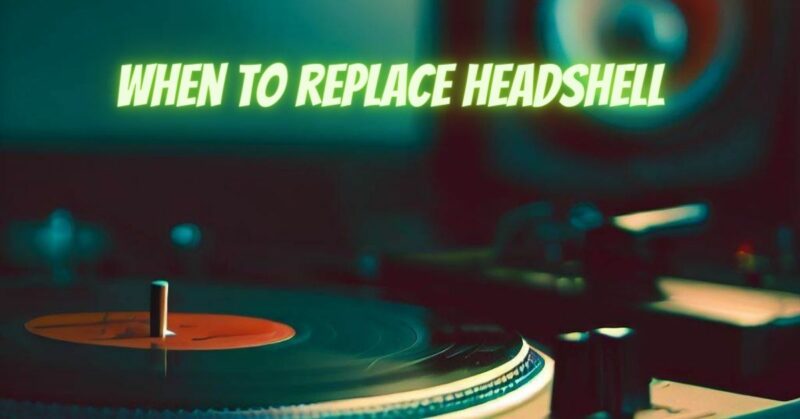In the enchanting world of analog audio, turntables stand as revered gatekeepers of musical nostalgia, preserving the art of vinyl playback for generations to come. At the heart of this captivating mechanism lies the headshell – a crucial component that holds the cartridge in place and ensures the faithful translation of grooves into melodies. Like any mechanical part, the headshell’s performance can change over time. But when is it time to bid farewell to your trusty headshell and usher in a new one? This article delves into the factors that guide the decision to replace a turntable headshell.
Understanding the Headshell’s Role
Before embarking on the journey of headshell replacement, it’s essential to grasp the role it plays in the turntable setup:
- Cartridge Mounting: The headshell serves as the platform that secures the cartridge to the tonearm. It must hold the cartridge securely while allowing for proper alignment and adjustment.
- Cartridge Alignment: The correct alignment of the cartridge is crucial for accurate tracking and optimal sound quality. The headshell’s design and adjustability play a significant role in achieving precise cartridge alignment.
- Tracking Force and Balance: A well-maintained headshell contributes to maintaining the correct tracking force, ensuring minimal wear on both the stylus and the vinyl record.
Indicators for Replacement
- Physical Damage: If the headshell shows visible signs of wear, cracks, or damage, it’s an indication that it may be time for a replacement. Physical damage can compromise the structural integrity of the headshell, affecting cartridge alignment and performance.
- Worn Threads: Over time, the threads on the headshell’s mounting screws can become worn, making it difficult to secure the cartridge properly. If you find it challenging to secure the cartridge tightly, it’s a sign that the headshell might need replacement.
- Alignment Issues: If you’re consistently struggling to achieve accurate cartridge alignment, despite meticulous efforts, it might be due to a worn-out headshell. Misalignment can lead to suboptimal tracking and sound quality.
- Tonearm Compatibility: If you’re upgrading your turntable’s tonearm or cartridge, the new components might require a different type of headshell. Incompatibility between the headshell and the tonearm/cartridge can warrant a replacement.
- Upgrading: If you’re seeking to improve your turntable’s sound quality, an upgraded headshell might be a worthy investment. High-quality headshells can enhance resonance control and contribute to a more refined audio experience.
Consult the Experts
If you’re unsure whether it’s time to replace your headshell, seeking expert advice can provide valuable insights. Turntable specialists, audio forums, and knowledgeable dealers can offer guidance based on your specific setup and needs.
Headshell Maintenance and Care
To prolong the lifespan of your headshell:
- Regular Inspection: Periodically inspect the headshell for signs of wear, damage, or misalignment.
- Proper Mounting: Ensure that the headshell is mounted securely and tightly to the tonearm.
- Alignment: Whenever you install a new cartridge or stylus, take the time to properly align it for accurate tracking.
- Gentle Handling: Handle the headshell with care to prevent accidental damage.
The headshell’s significance in the turntable ecosystem is undeniable, ensuring proper cartridge mounting, alignment, and tracking force. As the bridge connecting the stylus to the grooves, it’s important to recognize when its time has come. Pay attention to indicators of wear, incompatibility, or alignment issues. Replacing the headshell when necessary can lead to improved performance, a more satisfying audio experience, and the continued preservation of your vinyl collection’s enchanting melodies.


